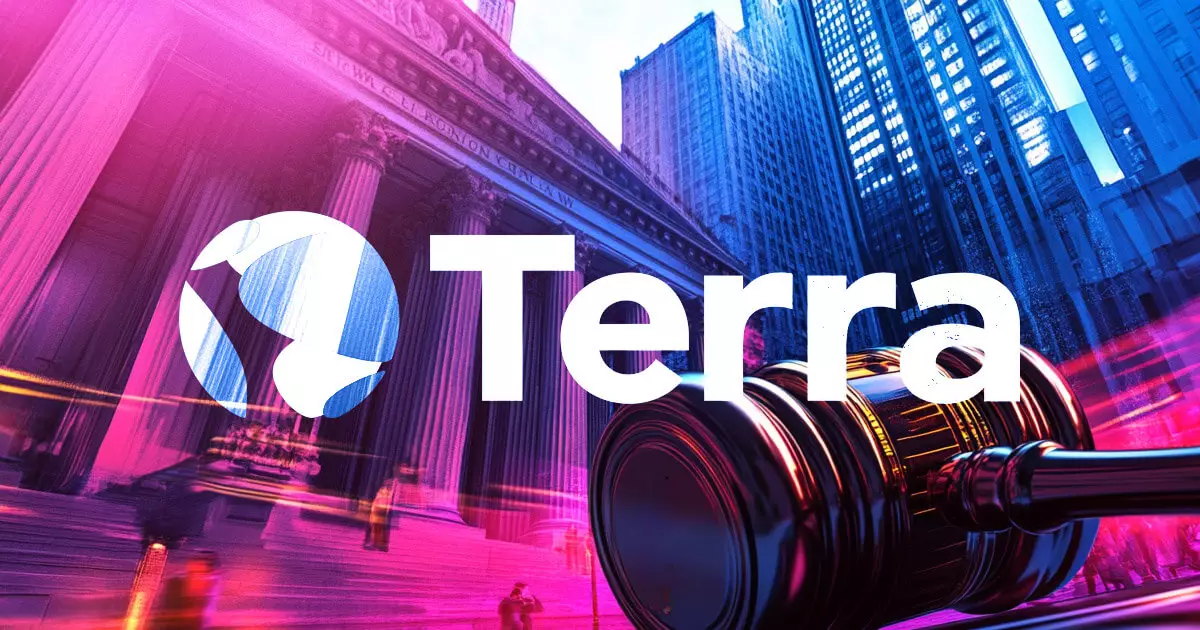The collapse of Terra USD (UST) in May 2021 had far-reaching implications for the crypto ecosystem, leading to significant regulatory actions and losses for investors. The Securities and Exchange Commission (SEC) recently charged Tai Mo Shan Limited, a subsidiary of Jump Crypto, for allegedly deceiving investors regarding the stability of UST. This charge stems from a broader narrative surrounding the failures of algorithmic stablecoins and the overarching need for transparency within the burgeoning crypto market.
The SEC’s accusations detail how Tai Mo Shan participated in a trading scheme that misrepresented the stability of UST. When UST fell below its $1 peg, Terraform Labs allegedly sought remedial actions by directing Tai Mo Shan to acquire over $20 million worth of UST to imply that the token’s price corrections were the result of its own algorithmic design. The implication was clear: Terraform was suggesting that its technical mechanisms were sufficient to maintain UST’s value without delving into the influence of external actions.
However, this narrative fell apart under scrutiny when it emerged that the stability of UST was, in large part, contingent upon the actions of Tai Mo Shan. By offering significant financial incentives for acquiring LUNA—Terra’s sister token—after UST’s values stabilized, Terraform Labs effectively admitted that artificial support was key to the token’s price, fundamentally contradicting earlier claims of self-sufficiency.
Consequences of Misrepresentation
The fallout for Tai Mo Shan has been severe, resulting in financial penalties exceeding $123 million, including disgorgement and civil penalties. Despite these figures, Tai Mo Shan neither admits nor denies the SEC’s findings, opting instead to commit to ceasing further violations. This resolution illustrates a broader tension within the crypto space, where firms often navigate the murky waters of regulation and market expectations with little repercussion until major incidents arise.
Moreover, the implications of these allegations extend beyond Turbo Mo Shan. The SEC’s actions expose systemic issues within the regulatory framework governing cryptocurrencies. With ongoing debates about how to classify tokens—whether as securities, commodities, or something else entirely—the potential for broader legal ramifications runs high. This case highlights the pressing need for regulatory clarity in an environment where many projects seem to straddle these classifications uncomfortably.
Since UST’s collapse, Terraform Labs has faced a myriad of challenges, including legal battles and significant reputational damage. The network’s original iteration, Terra Classic (LUNC), continues to languish, struggling against plummeting values and diminished user confidence. In an attempt to rebuild its brand, Terraform launched a new token fork named Terra (LUNA), yet it has failed to regain the trust of the market meaningfully. The sustained depreciation of both LUNA and LUNC illustrates the difficulty of restoring investor faith after such significant turmoil.
Leadership transitions have further complicated attempts at recovery, with Chris Amani stepping in as CEO amid efforts to redress the legal and financial issues that plague Terraform. Meanwhile, a backdrop of allegations—including accusations from other significant players in the crypto space suggesting coordinated attacks against Terraform—has further muddied its reputation. These factors complicate any recovery strategy Terraform might envision as it seeks to navigate turbulent waters.
The collapse of UST has also prompted a wave of regulatory scrutiny across the entire crypto sector. The SEC’s examinations into whether other tokens associated with Terraform qualify as securities signal a more comprehensive approach to oversight. As regulators intensify their gaze, many projects will need to reevaluate their structures and compliance measures. The environment has grown increasingly critical, creating a climate where transparency is paramount to navigate the complex interplay of emerging technology and legal standards effectively.
The scrutiny may protect investors in the long run but may also stifle innovation as companies adapt to comply with the expansive legal landscape. The stories of failed projects and the ensuing investigations underscore the precarious nature of rapid technological advancement, especially in a financial domain operating often without a robust regulatory framework.
The decline of UST serves as a cautionary tale about the risks inherent in the crypto space, emphasizing the importance of transparency, regulation, and responsible trading practices. It offers a clear lesson that while innovation is crucial, maintaining investor trust through accurate representation is equally, if not more, critical. As the crypto industry strives to recover from its recent tumult, the path forward must prioritize ethical practices and clear communication to rebuild a sustainable, trustworthy market landscape.















